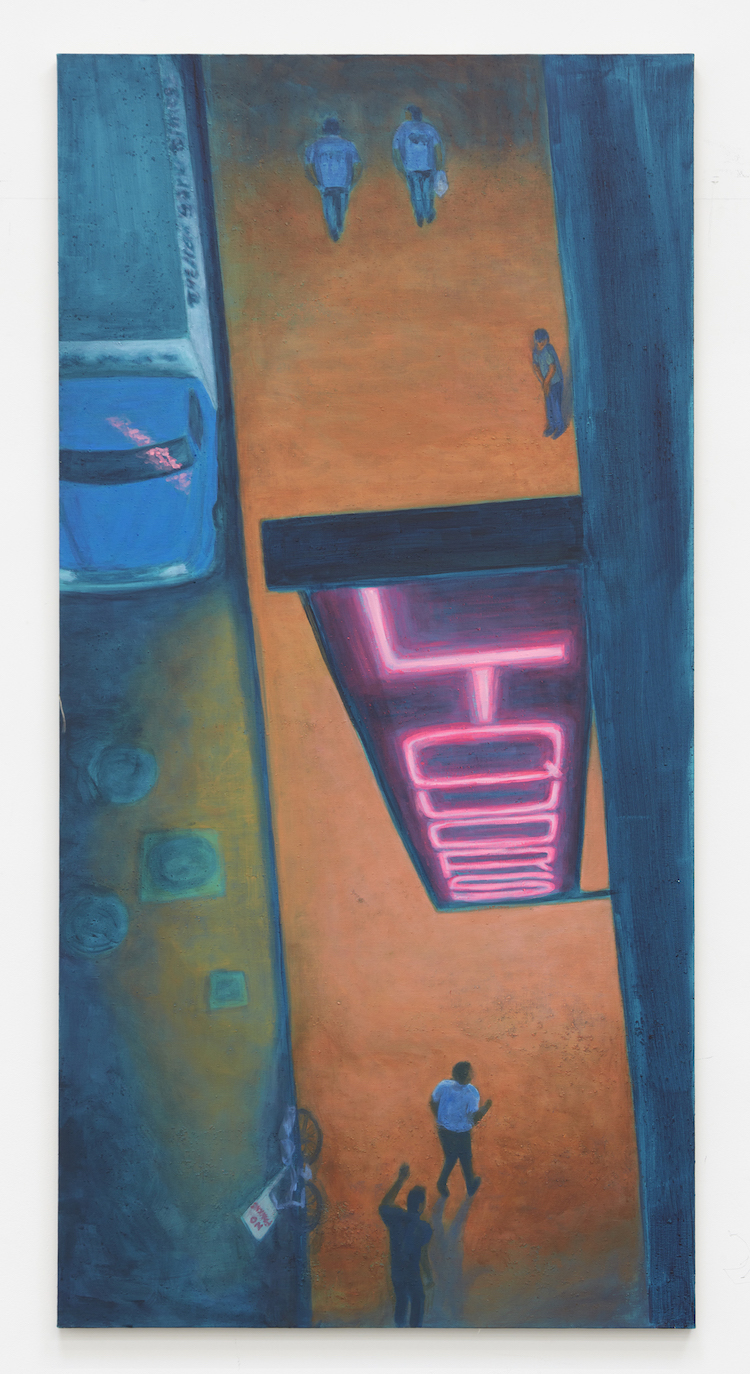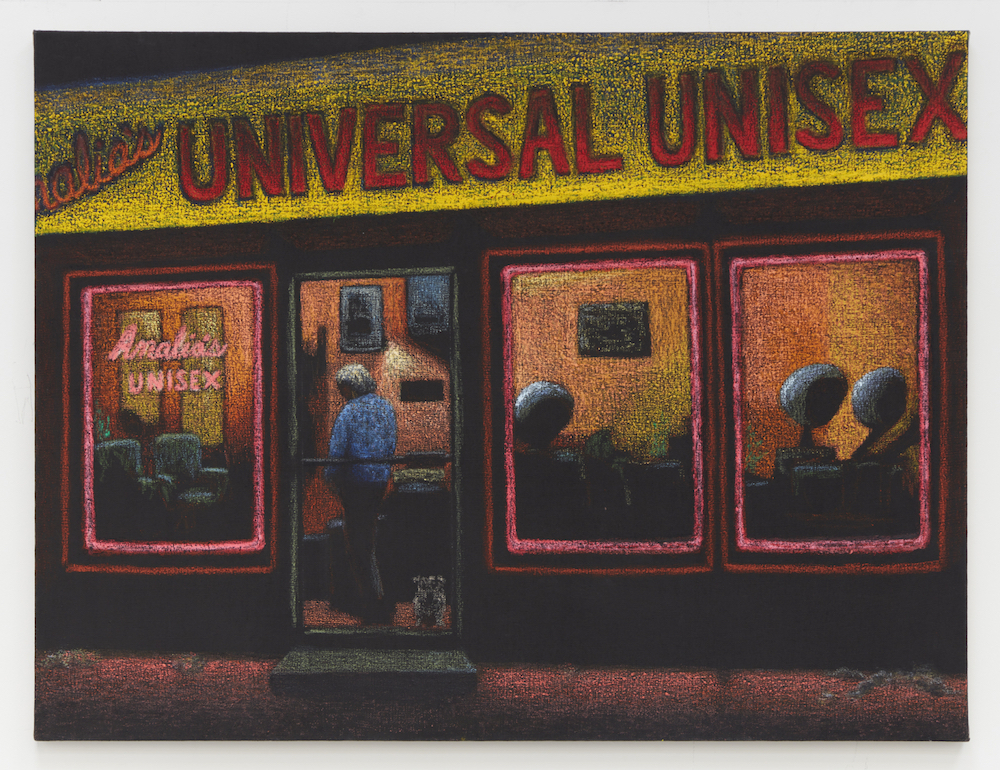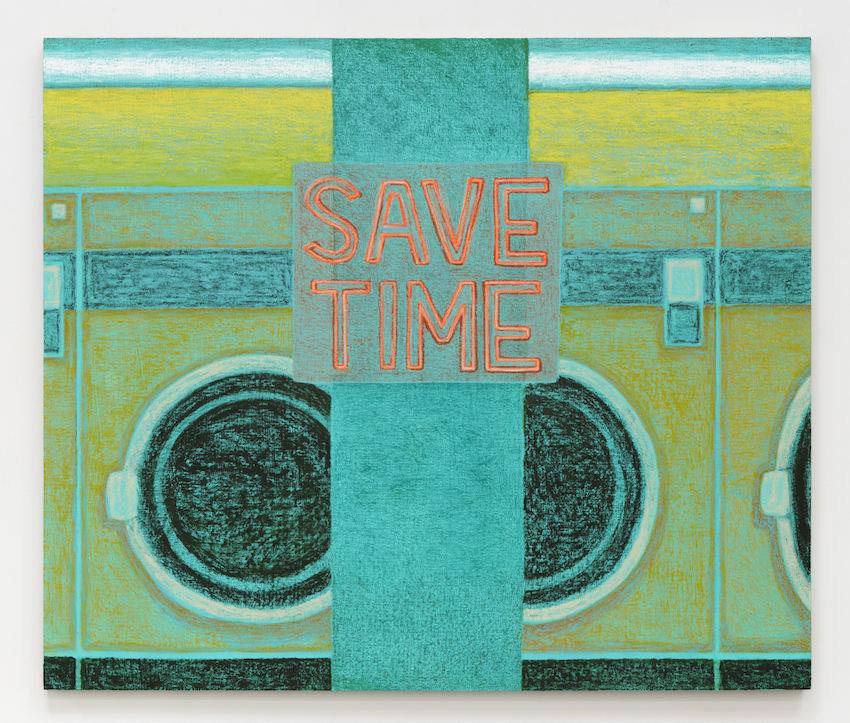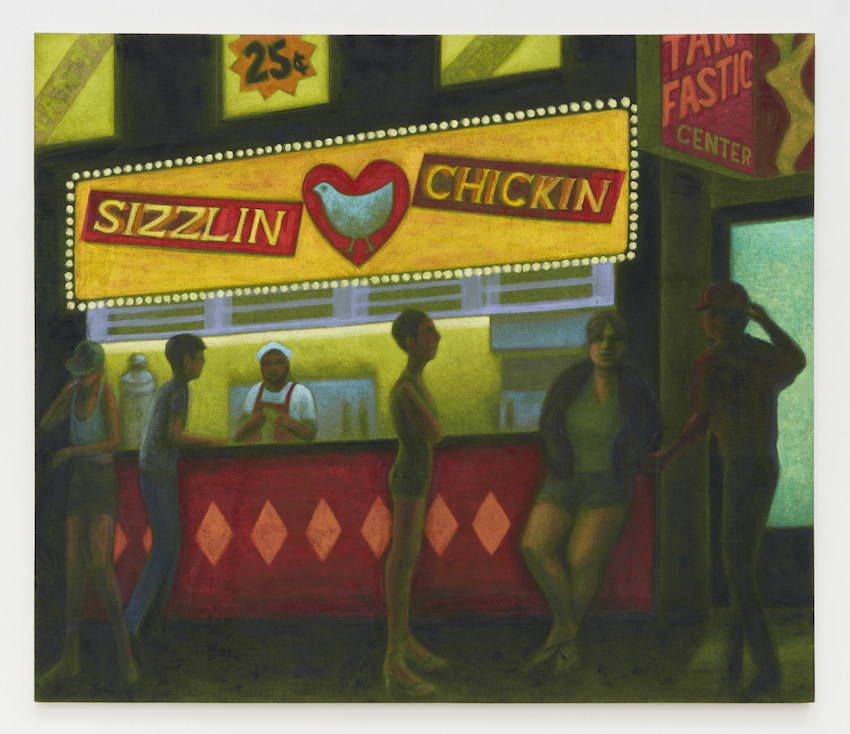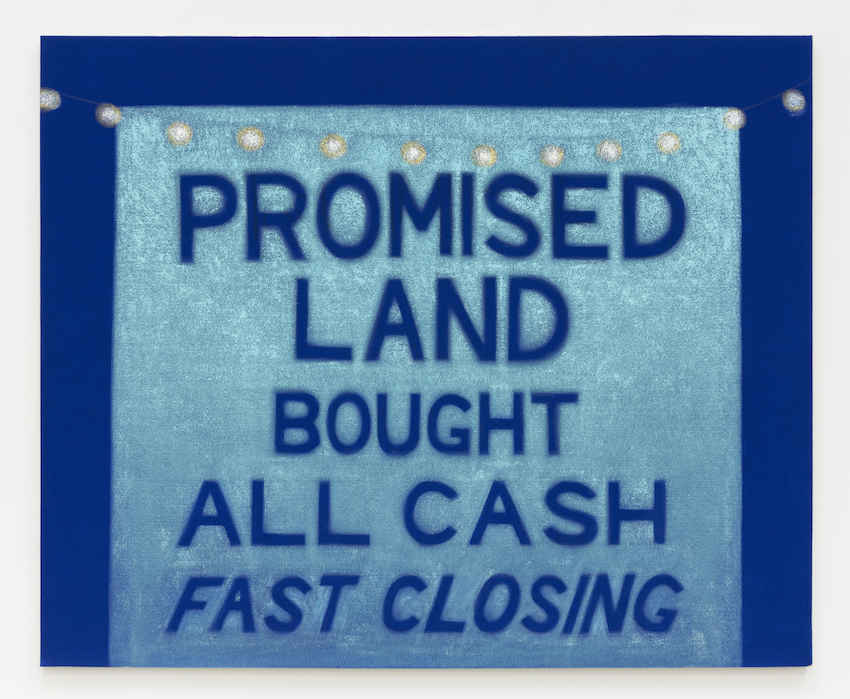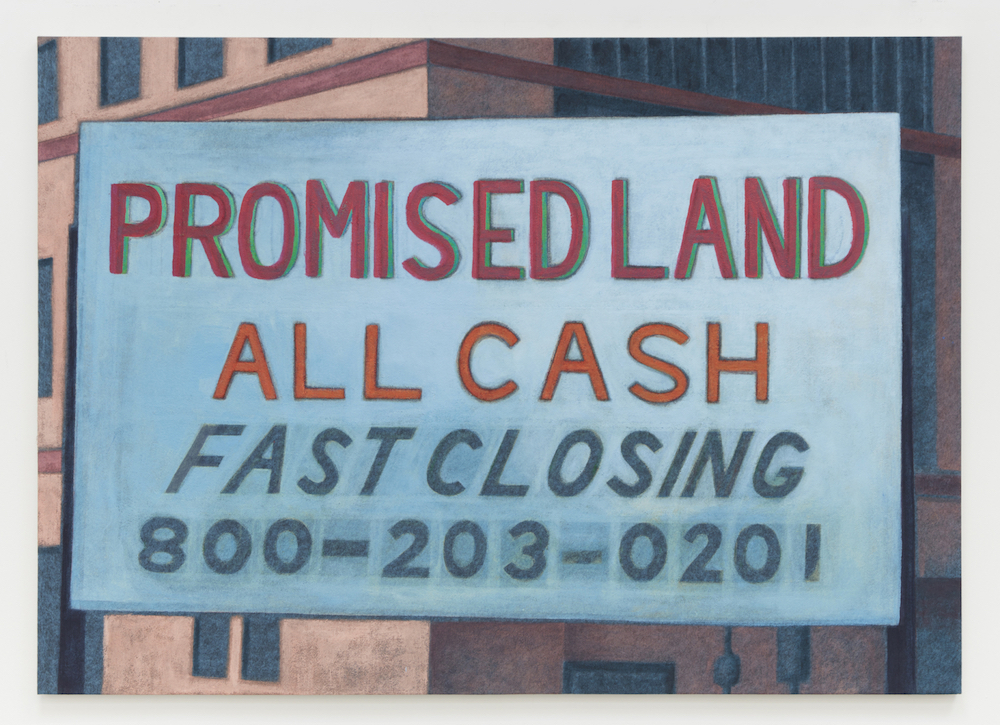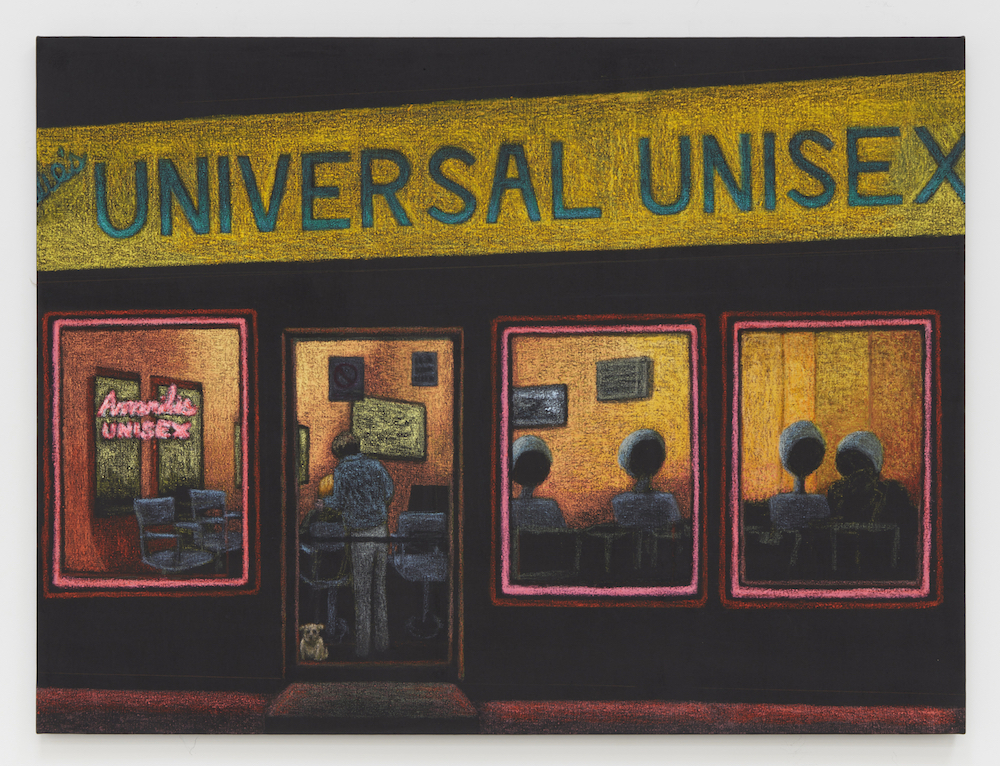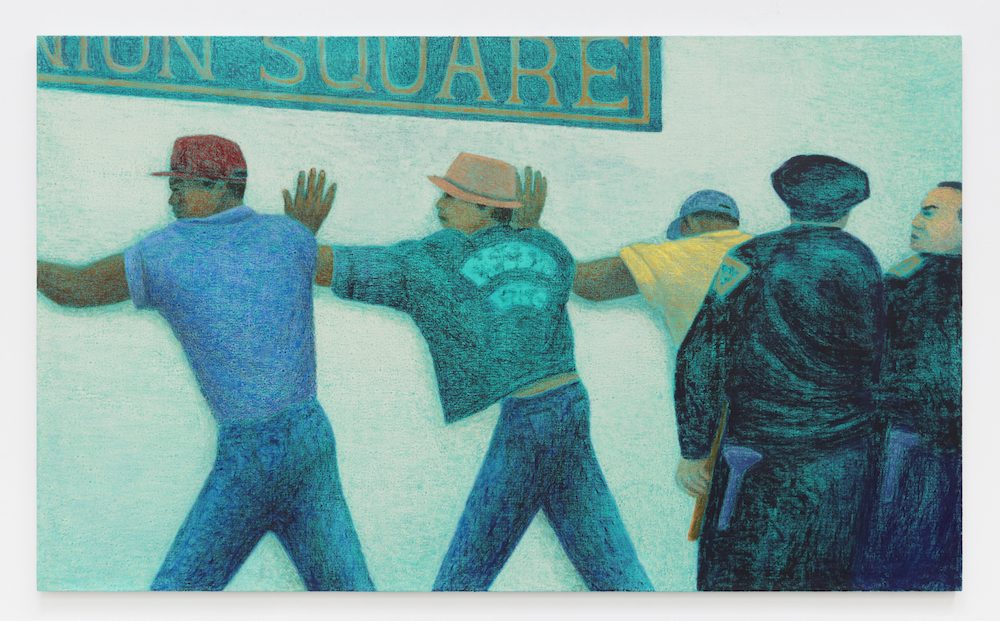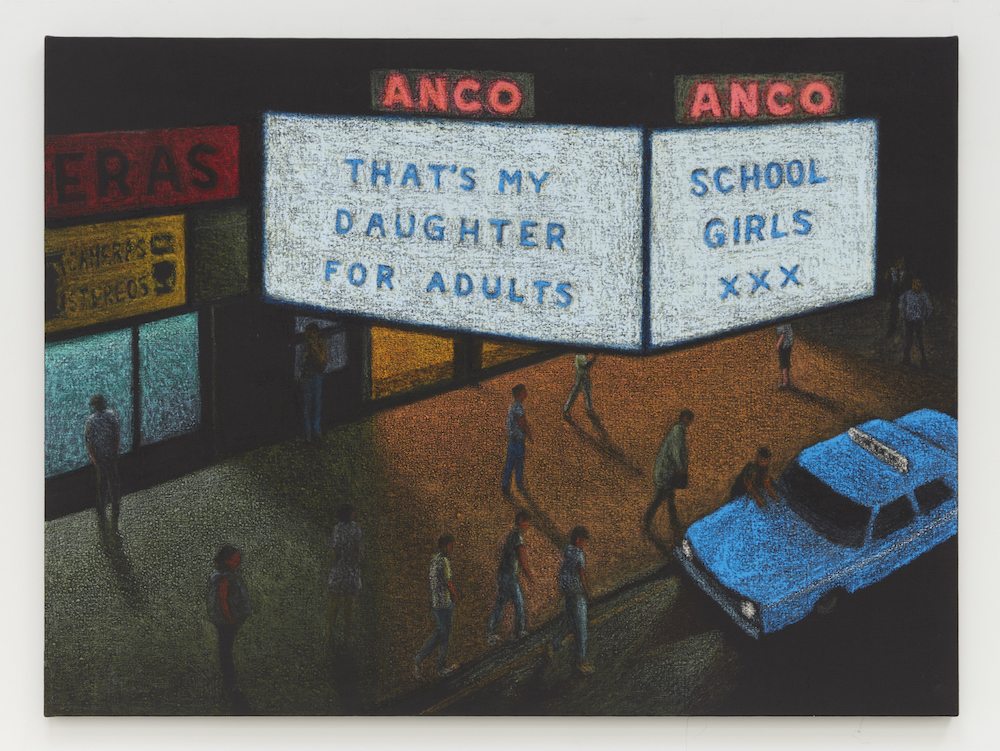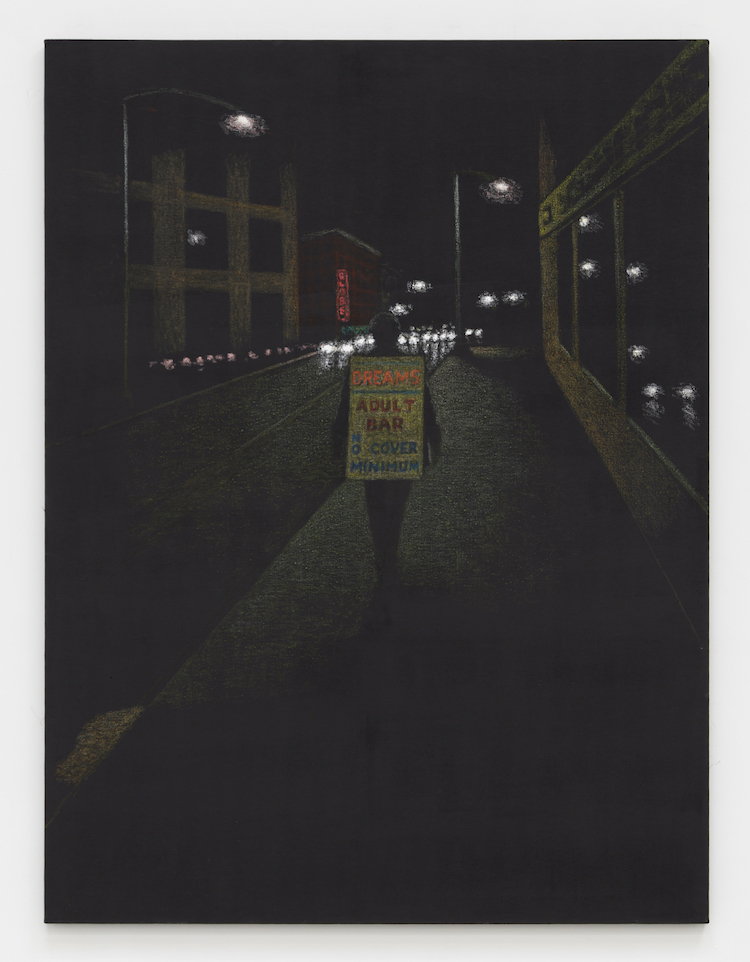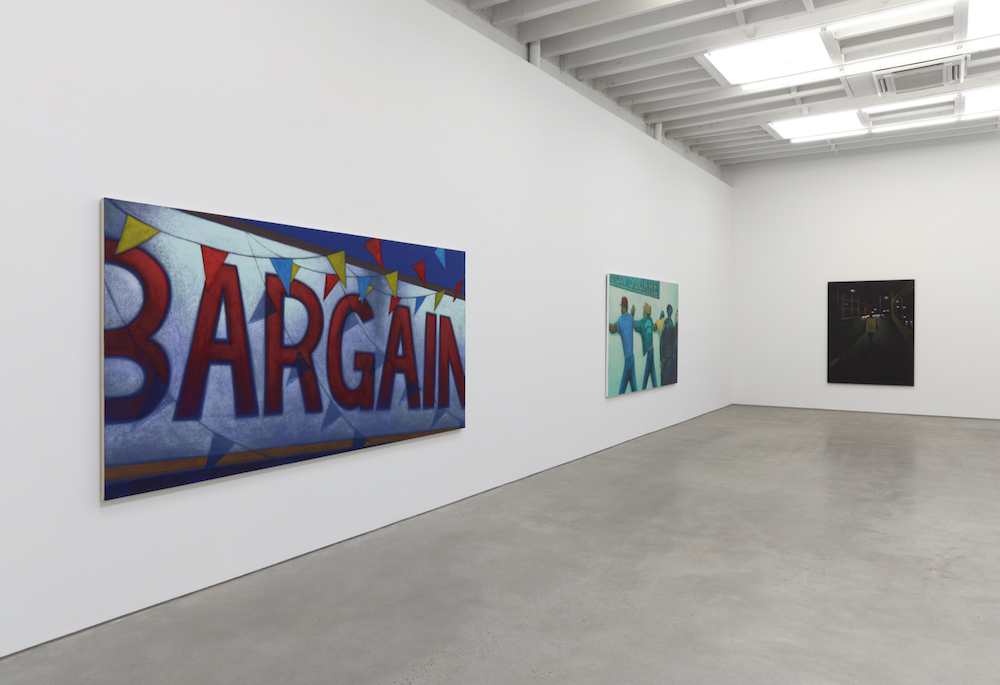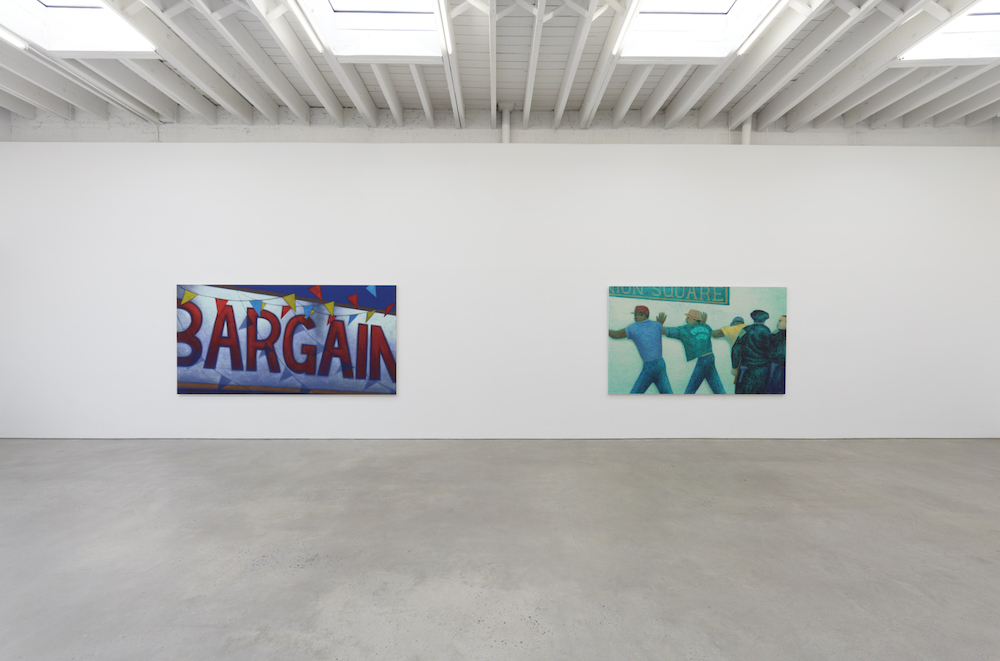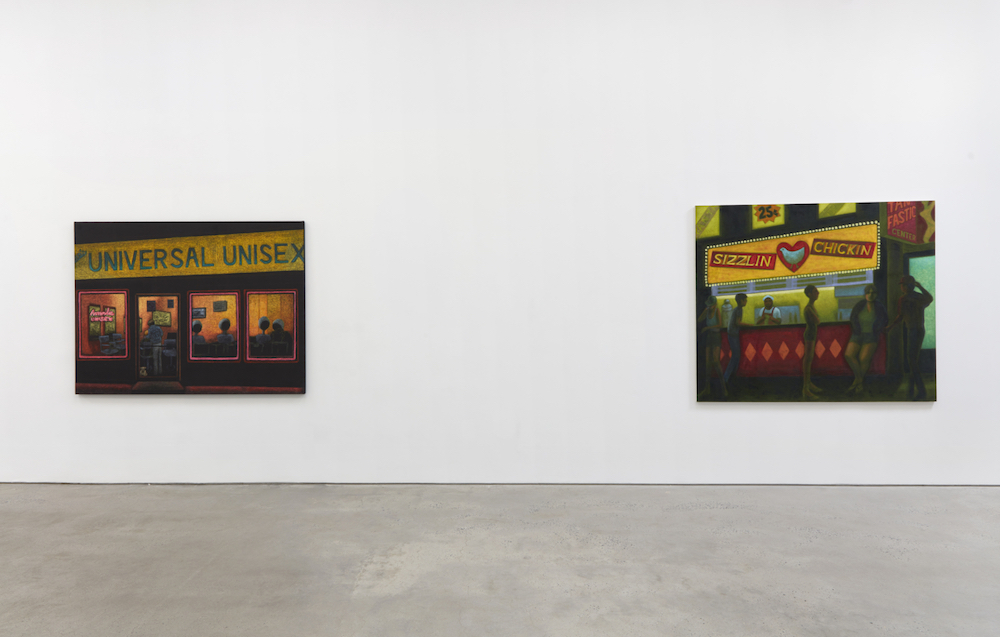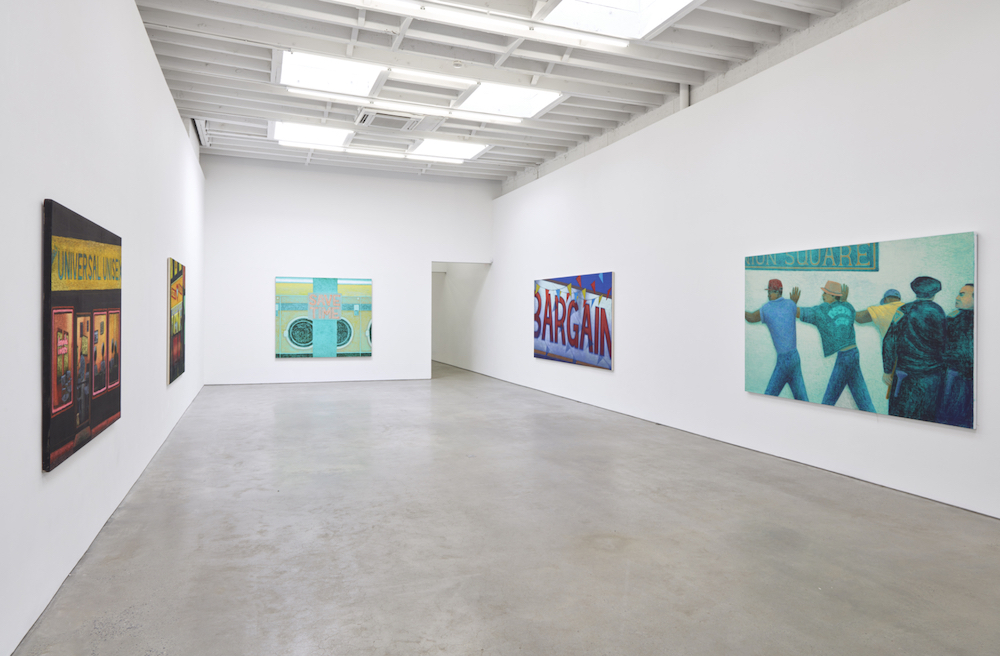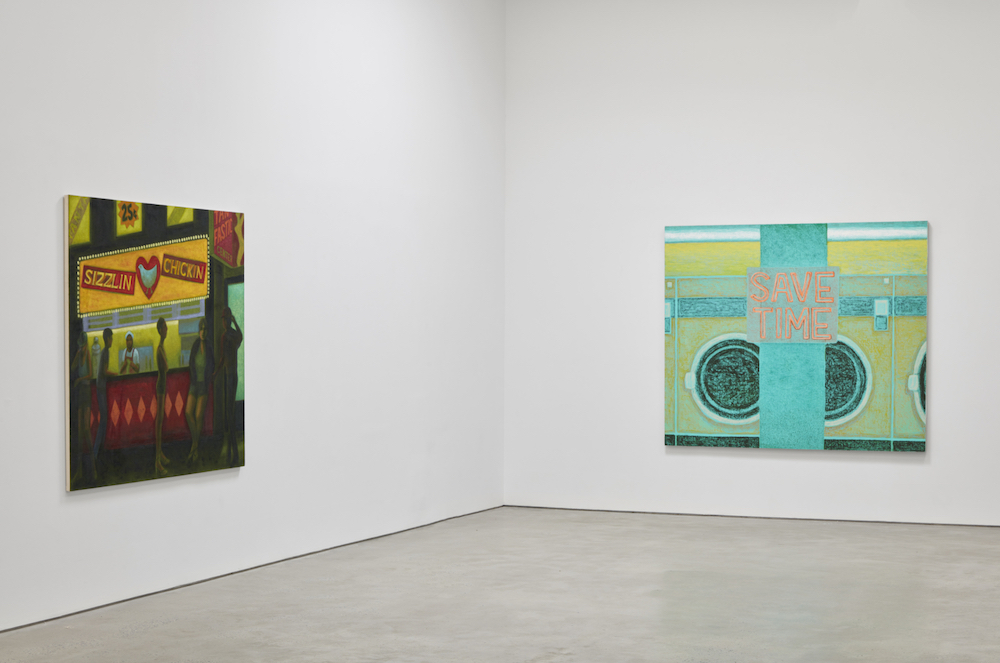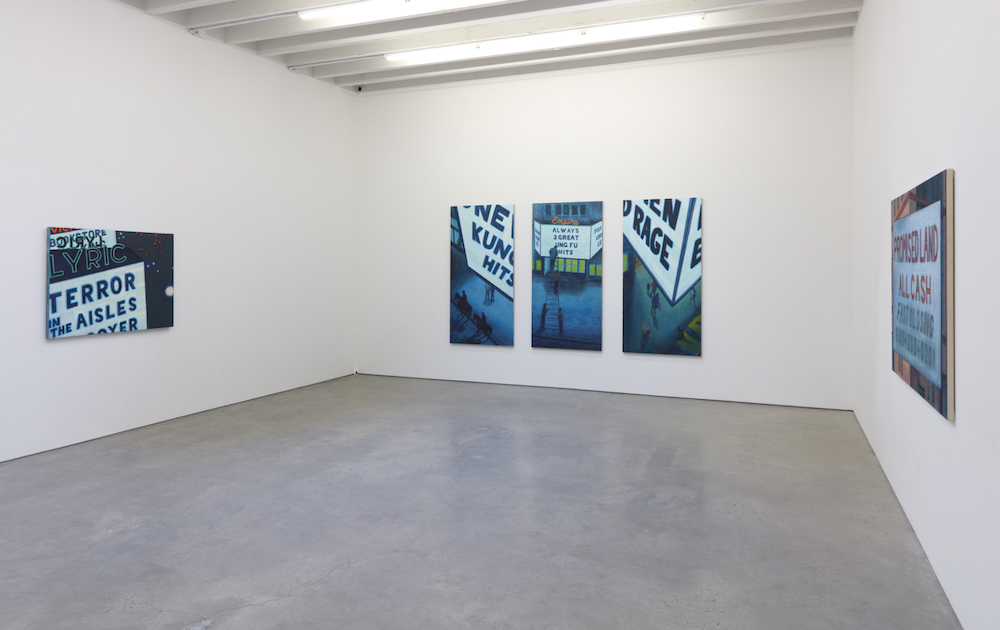In many of Jane Dickson's paintings, the text falls off the canvas, as if you are viewing the works from a moving car. And in the midst of what appears to be intense moments or scenes captured in the heart of New York City, there is a quiet. Texts drift pass, thoughts meander, scenes unfold, unscripted, but cinematic nonetheless. Dickson has long been one of the great NYC painters, capturing an essence without the noise, showing the power of language and signage and our relationship to moving imagery. Promised Land, on view at Karma now, is an exemplary body of work, powerful in that it showcases a sense of chaos from an angle of distance, as if the signs themselves are telling you how it feels to be looked at and passed by for all these years.
As the gallery notes, "Dickson’s engagement with signage dates to the beginning of her artistic career in New York: Between 1978 and 1983, she designed and animated Times Square’s first digital billboard, the Spectacolor, while also living in the then-gritty neighborhood. Looking down from the window of her apartment or from the third floor of One Times Square, where she programmed the billboard, Dickson photographed the bustling intersection below, using the images as source material for paintings." Though the work is based in NYC here, she has written that her paintings reprsent “what Americans are thinking, what we want and why we want it.”
It doesn't seem like a coincidence that at the same time Dickson opens Promised Land that up the road, Ed Ruscha's own conversations with language, signage, text and the American landscape has opened at MoMA. Both artists have a way of playing with a vantage point, but in situation and ethereal, and what Dickson shows is that though we move through a space, through time, the things we view remain cemented in our memory. —Evan Pricco

